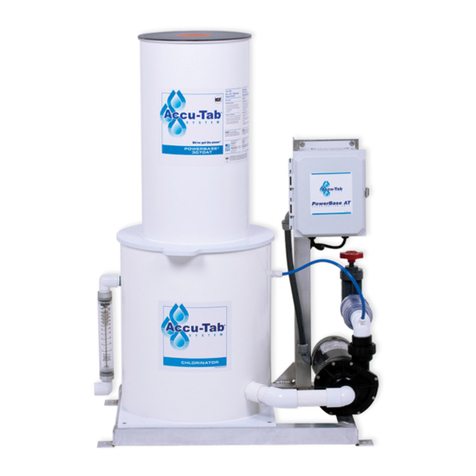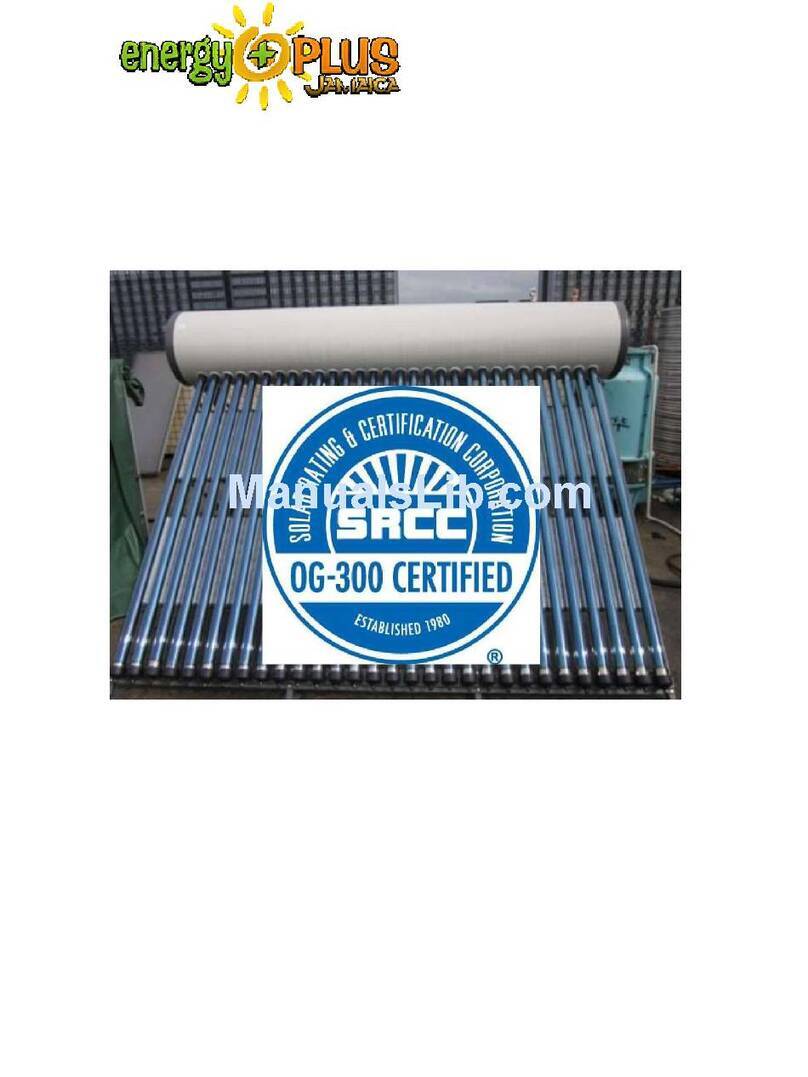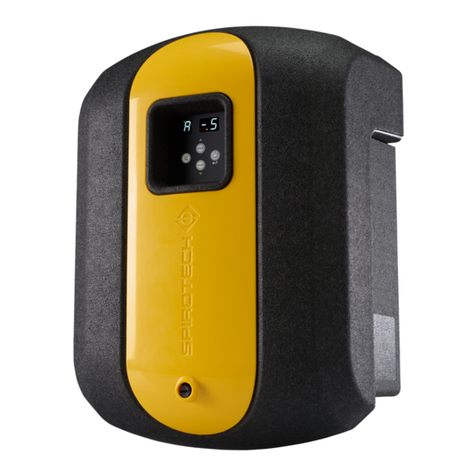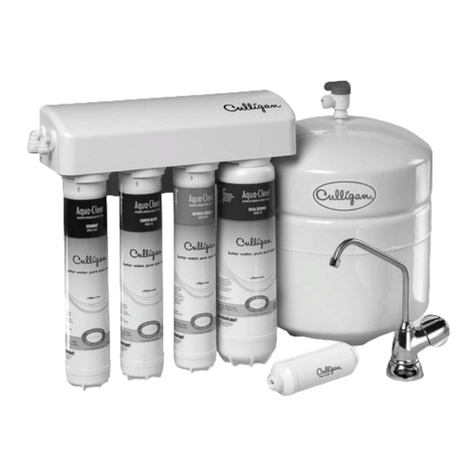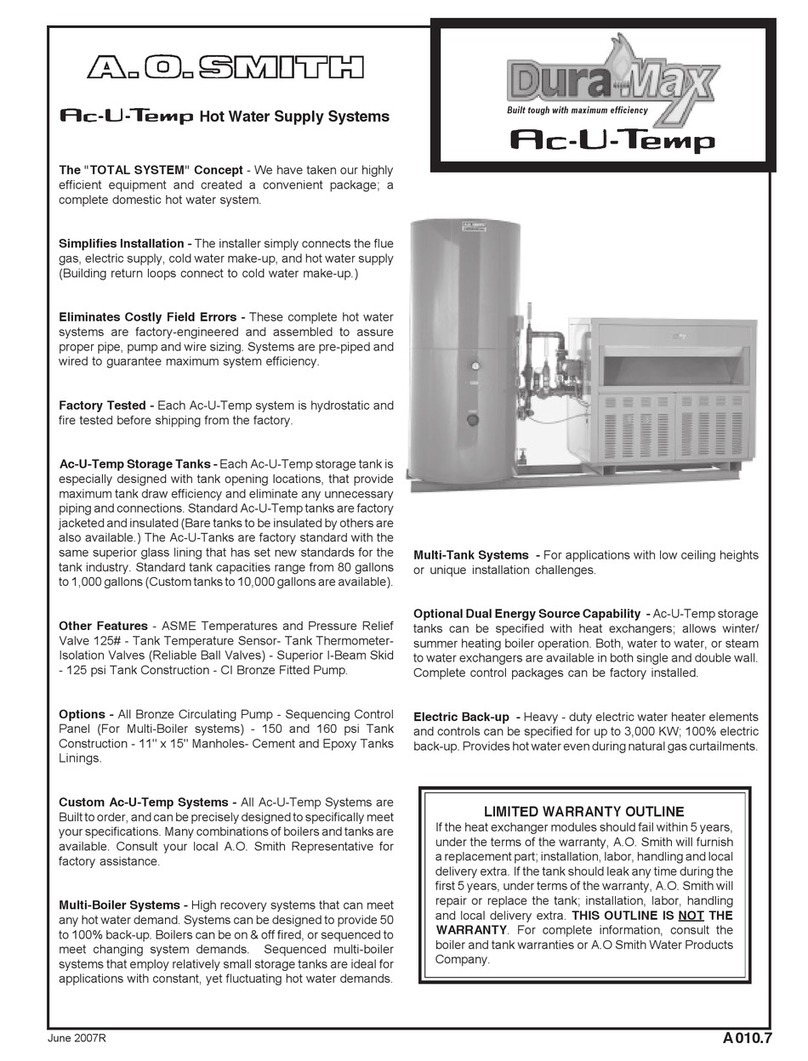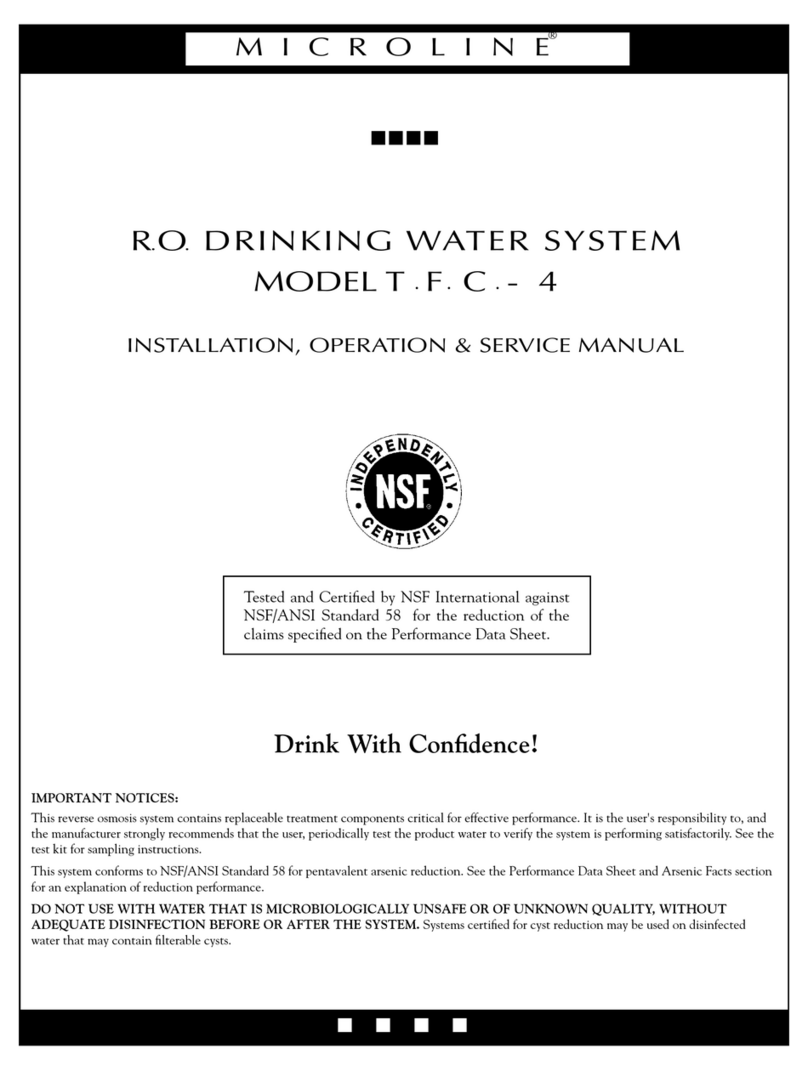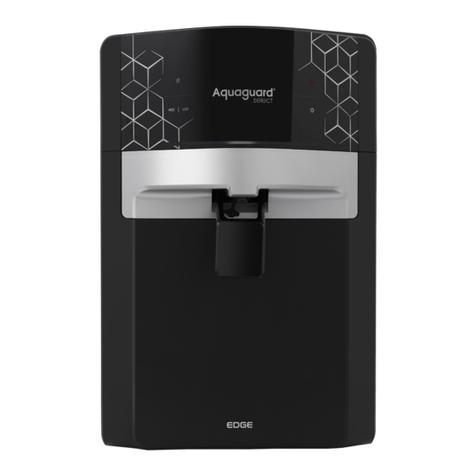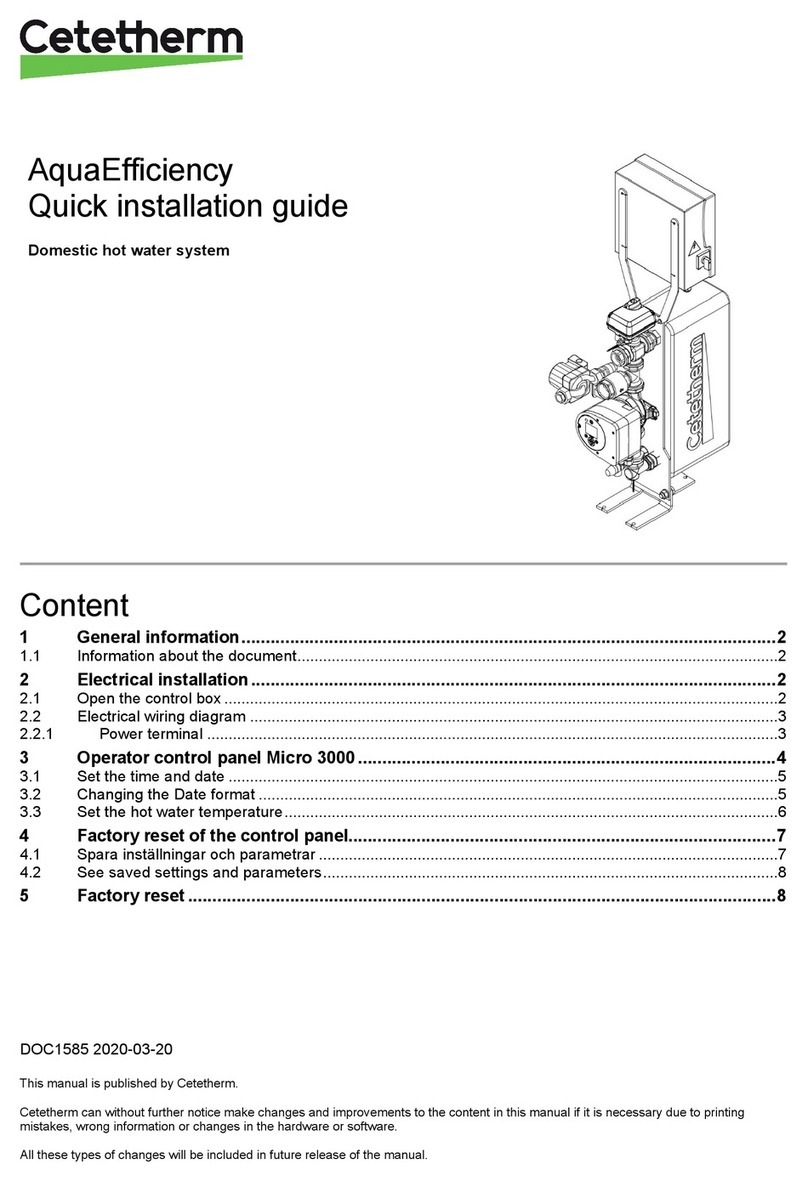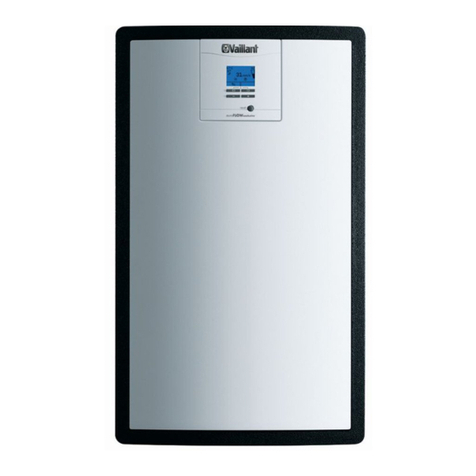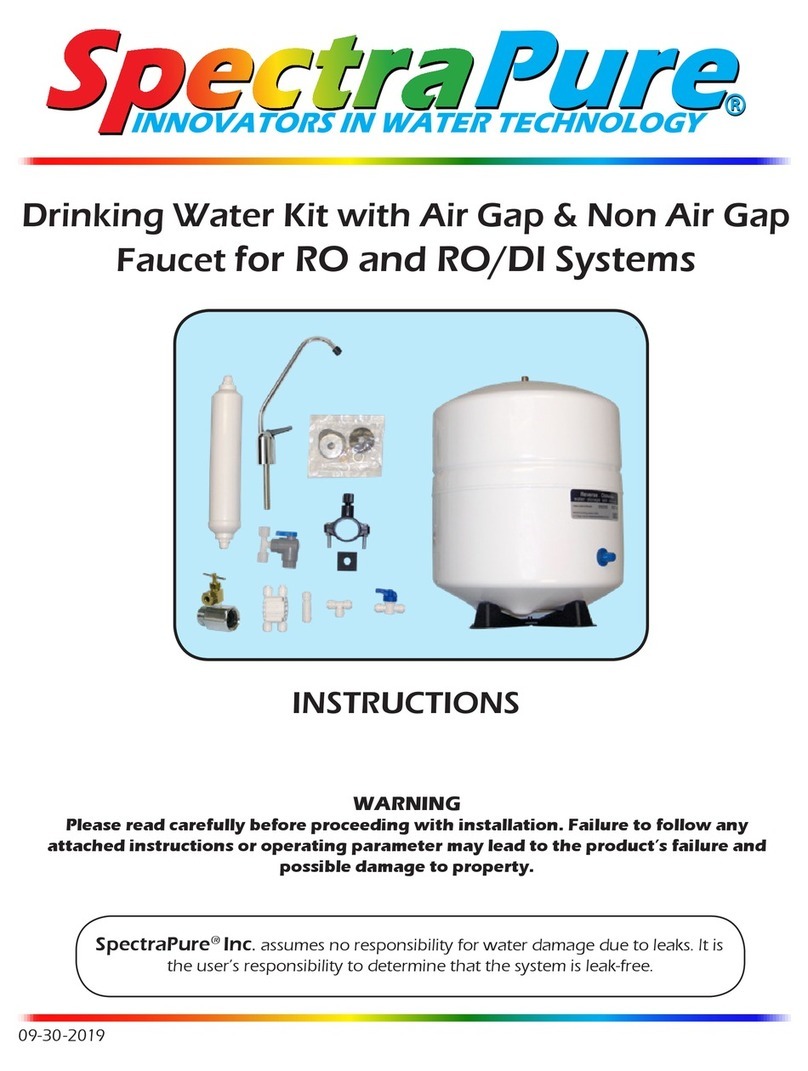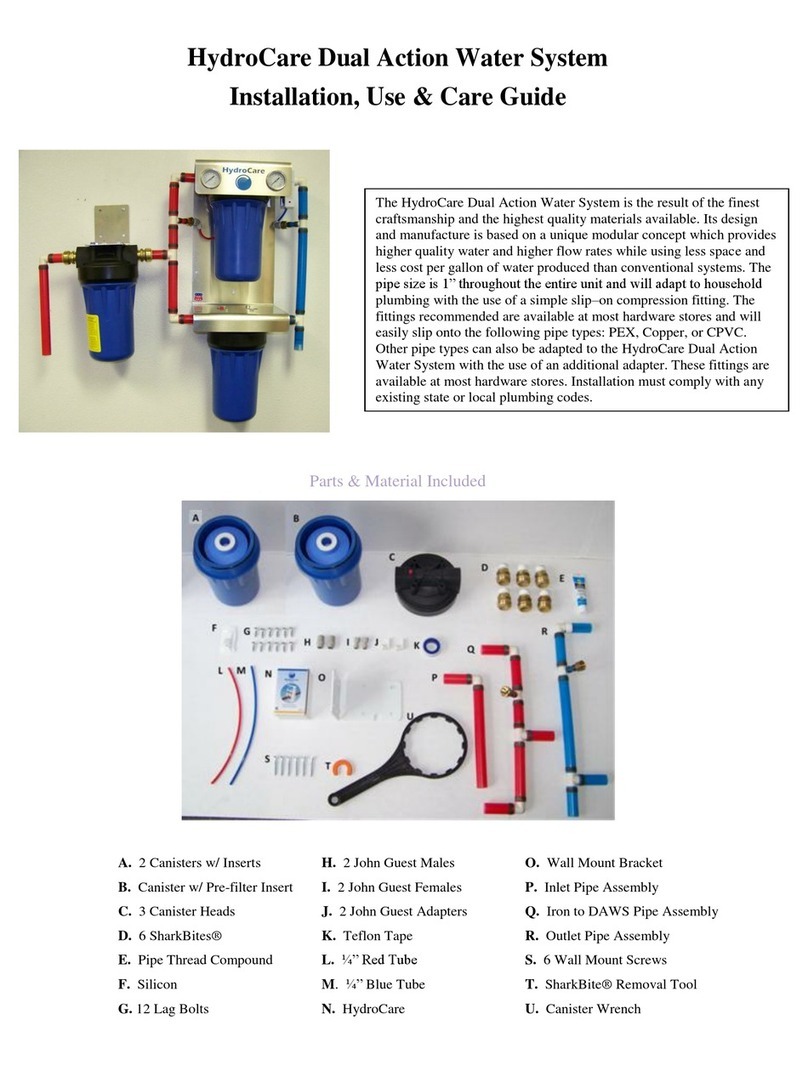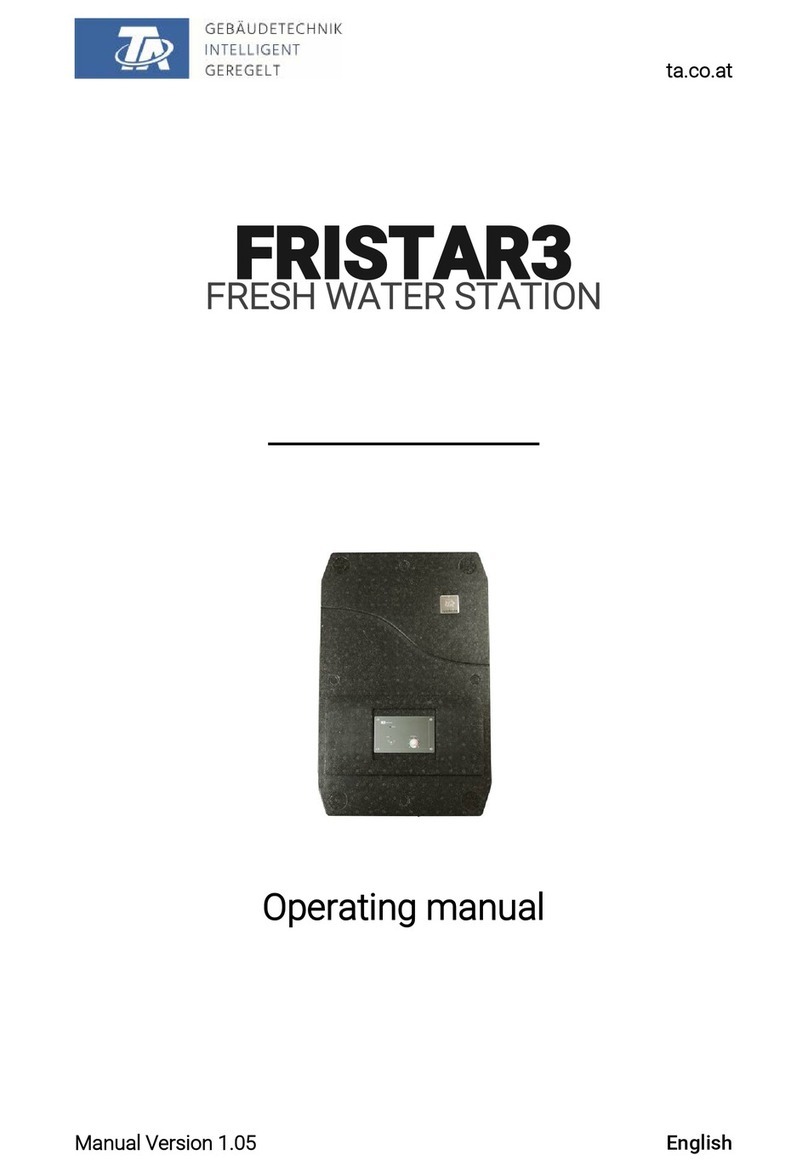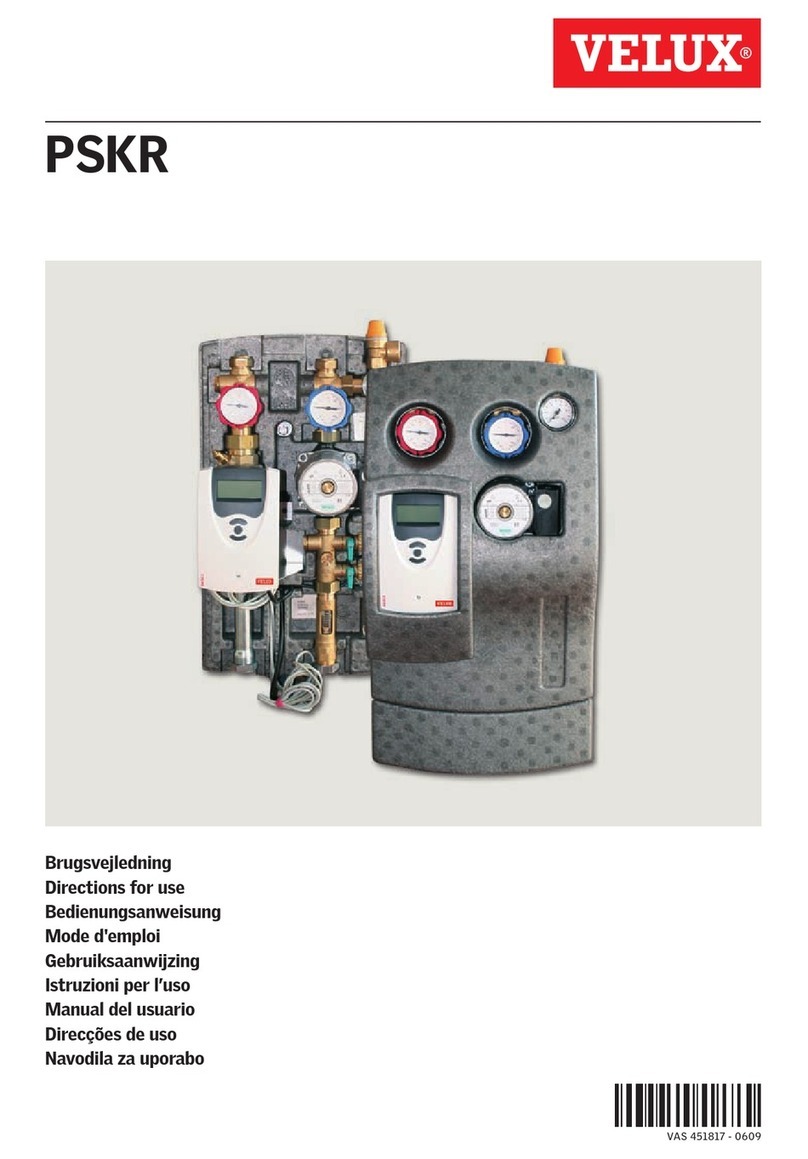
4 – Part 2: General information
Preface
The VELUX solar water heating system uses the sun’s energy as a source of heat to produce hot water for domestic household
use. Designed to meet the certication requirements of SRCC 0G-300, VELUX solar water heating systems are reliable, and can
typically generate from 50% to 80% of your annual household water heating needs free from the sun. Your remaining hot water
needs can be supplied by a suitable backup or auxiliary energy source . Results will vary based upon on your specic region in the
country.
Introduction
The system performance varies as a function of the household hot water load. The ambient air temperature, the roof pitch and
orientation along with seasonal solar intensity will determine the amount of hot water generated by your VELUX solar water
heating system.
Your VELUX solar water heating system uses a circulation pump that circulates a propylene glycol heat transfer uid throughout
the system. This uid protects the collector piping from freezing, prevents corrosion of system components, and keeps scale
deposits from forming that could reduce the performance of the system. Proper maintenance of the propylene glycol in the
system can protect the solar water heating system to minus 40° Fahrenheit. This manual is intended to familiarize you with the
proper installation and maintenance of your VELUX solar water heating system. This system must be installed by a licensed solar
or plumbing contractor in accordance with SRCC Standard OG-300 and all applicable national, state and local codes. Failure to
follow the procedures described in this manual can void the manufacturers’ warranty.
System description
The VELUX solar water heating system is a closed-loop active solar system which, when installed with a suitable auxiliary heat
source, can act as the primary source of domestic hot water for residential use. The system components provided with the
VELUX solar water heating system include the solar collectors, collector ashings, solar loop pipe and ttings, solar storage tank,
solar pump station and controller, temperature sensors, expansion tank, microbubble air separator, mixing valve, and non-toxic
propylene glycol heat transfer uid. The solar collector is the engine of the VELUX solar water heating system . When the sun is
shining, the heat energy is absorbed by the solar collector and transferred to the heat transfer uid circulating through the solar
collectors. The system pump eciently circulates this heated uid through the collector’s piping and the heat exchanger located
in the solar storage tank. As the heat transfer uid passes through the heat exchanger, the heat in the uid is transferred by
conduction to the potable water in your solar storage tank causing the temperature in the tank to rise. This process continues as
long as the sun is shining or until the temperature in the solar storage tanks reaches its maximum temperature set point.
Specications
The VELUX solar water heating system is designed to produce domestic hot water from either solar collectors, an electrical
backup, a gas backup, or a boiler back up (provided by others). The VELUX systems can also be used as a solar preheat system to
conventional electric, gas, or tankless water heaters (provided by others).
Collectors and ashings
VELUX solar collectors and ashings allow for a low prole, roof integrated, solar panel installation. The VELUX collector is made
up of copper tubes and a copper plate that is covered with a highly selective absorber coating; this assembly is enclosed in a well
insulated aluminum frame or “box” and covered with low-iron tempered glass glazing. VELUX solar water heating systems are
available for integration into either shingle or tile roofs or for rack mounting. VELUX solar water heating system model numbers
CLI U12 SDOL 118, CLI U12 SK0L 218, CLI U12 SK0L 318, CLI U12 SD0L 119, CLI U12 SK0L 219, CLI U12 SK0L 319
,
CLI U12 SDOL 1110, CLI U12 SK0L
2110, CLI U12 SDOL 1111, CLI U12 SK0L 2111, CLI U12 SDOL 1112, CLI U12 SK0L 2112, CLI U12 SDOL 1113, and CLI U12 SK0L 2113,
are systems that
include “L” step ashings for integration into shingle roofs. VELUX solar water heating system models
CLI U12 SD0W 118 , CLI U12
SK0W 218, CLI U12 SK0W 318, CLI U12 SD0W 119 ,CLI U12 SK0W 219, CLI U12 SK0W 319,
CLI U12 SDOW 1110, CLI U12 SK0W 2110, CLI U12 SDOW
1111, CLI U12 SK0W 2111, CLI U12 SDOW 1112, CLI U12 SK0W 2112, CLI U12 SDOW 1113, and CLI U12 SK0W 2113,
are systems that include
ashings for integration into tile roofs. CLI U12 SDOF 118, CLI U12 SK0F 218, CLI U12 SK0F 318, CLI U12 SD0F 119, CLI U12 SK0F 219,
Part 2: General information
